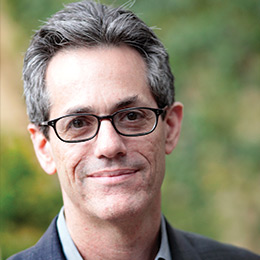
- Why “hate”? What does the framework of “hate” do that other frameworks, such as “intolerance” or “phobia,” don’t accomplish?
The simple answer is because hate is so ubiquitous, and yet little understood. The longer answer is that the initiative emerged out a series of conversations that I had with Chancellor Gene Block about the persistence of antisemitism. At a certain point in our conversations, we made a conceptual leap to focus not on a single—and deeply unsettling—case study, but on the phenomenon of group-based hate. We wondered why groups passed on deep enmity toward other groups from generation to generation. What was it about hate that was so transmissible? At a certain point in our discussions, we also wondered how we might understand the rise of hate in the individual, given that we know so much more today about how the brain functions than we used to. And thus was born to the study for the UCLA Initiative to Study Hate.
- According to your website, “In its first year, the UCLA Initiative to Study Hate has distributed nearly $600,000 in research funds to 4 large-scale ($70-100k) and 19 smaller-scale (up to $15k) research projects examining the phenomenon of hate.” These projects are extremely varied: one focuses on the neurobiology of hate, whereas another uses speech-act theory to examine racial slurs. How did you decide on this cohort of projects? What factors went into the decision-making process?
What we wanted was a range of projects that drew on the enormous research strengths of this campus. What we didn’t expect was that we would receive 60 grant proposals from across campus. Who knew that there were that many research teams interested in studying hate? Initially, we thought we’d support 8-10. We ended up supporting 23, because we were so taken by the breadth and depth of the proposals. Our goal was to fund projects from North and South Campus, from the social sciences, the arts, and the behavioral sciences, among other fields. And we have been able to do so. The great challenge—and opportunity—has been to bring the nearly two dozen teams together in a monthly seminar for the purposes of cross-fertilization and collaboration. It’s been really exciting to witness the constant traversing of disciplinary boundary lines in the seminars.
- How have these projects developed over so far? What do you hear from the teams of researchers? Is there upcoming programming we can look forward to as you round out year 1 of the initiative?
We’ve heard from many that their original research questions have changed over time, as they interacted with the other teams. We are now moving in the current spring quarter to seminars in which each team presents its provisional conclusions. We’re very excited to see what the teams have come up with. We will be producing a video and series of reports that capture what was accomplished in this first year.
- What is your biggest take-away from the initiative, so far?
Well, we’ll see what the teams come up with in May and June. But one of the most interesting take-aways involves the very complexity of the term “hate.” It can signify an emotion, a deeply ingrained dislike, a catalyst to violence or a behavior. There is some benefit to having such a capacious term in order to make sense of actions that we encounter personally or in the news all the time. But the term can’t explain everything. Is it an animating force of structural inequality? Or is it distinct? Addressing these kinds of key terminological and philosophical question induces a certain degree of constraint, even humility. That said, our hope is that we will be able in coming months to offer, if not a single concise definition, a series of definitional guidelines to help shape research.
- Where are you hoping to take the initiative as it closes out its first year and looks towards its second?
We are expanding our efforts in several ways. First, we’ll be starting up a new podcast in the coming months that addresses important new developments in the study of hate, so stay tuned. Second, in addition to funding grantees from across campus next year, we’ll also be creating our own in-house research team to take up what we see as core questions in the study of hate. That team will be comprised of faculty, post-docs, graduate students, and undergrads. And I’m pleased to say that, together with the Leve Center, we’ll be supporting a post-doc next year who works on antisemitism. That development, in some sense, closes a circle, since the original idea of the initiative began with a conversation about antisemitism. We believe it is both important to study antisemitism as part of the Initiative—and to make sense of antisemitism as part of a larger ecosystem of enmity and hostility that plagues the U.S. and the world today.